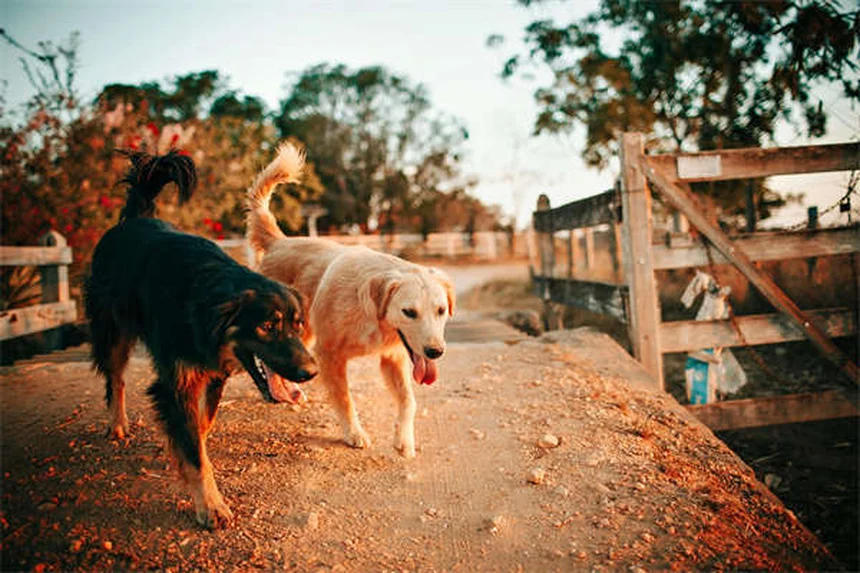Can rabbits get mastitis? The answer is absolutely yes! Rabbit mastitis is more common than many owners realize, especially in nursing does. Both septic and cystic mastitis can seriously impact your bunny's health if left untreated. I've seen too many cases where early signs were missed, leading to painful complications. The good news? When caught early, most mastitis cases respond well to treatment. In this guide, we'll walk you through everything you need to know about identifying, treating, and preventing these mammary gland issues in your furry friend. Your quick action could save your rabbit's life!
E.g. :Leflunomide for Pets: What Dog & Cat Owners Need to Know
Advertisement
- 1、Understanding Rabbit Mammary Gland Issues
- 2、Spotting the Trouble Signs
- 3、Getting the Right Diagnosis
- 4、Treatment Options That Work
- 5、Helping Your Rabbit Heal
- 6、Prevention Is Better Than Cure
- 7、When to Call the Vet
- 8、The Emotional Side of Care
- 9、Beyond the Basics: Additional Rabbit Health Considerations
- 10、The Social Aspect of Rabbit Health
- 11、Alternative Approaches Worth Considering
- 12、Long-Term Health Monitoring
- 13、Understanding the Financial Aspect
- 14、FAQs
Understanding Rabbit Mammary Gland Issues
What's Happening Inside Your Bunny?
Let me tell you about two common problems that can affect mama rabbits: septic mastitis and cystic mastitis. Picture this - your rabbit's milk-producing glands get infected (that's septic mastitis) or fill with fluid-filled sacs (cystic mastitis). Neither situation is fun for your furry friend!
Septic mastitis happens when bacteria invade the milk glands. This isn't just uncomfortable - it can become life-threatening if the infection spreads to the bloodstream. On the other hand, cystic mastitis creates those fluid-filled sacs we mentioned. While these cysts usually contain sterile fluid, they can sometimes turn cancerous if left untreated.
Spotting the Trouble Signs
When Your Rabbit Isn't Acting Right
Ever noticed your rabbit behaving strangely after giving birth? Here's what to watch for with septic mastitis:
- Not eating like usual (anorexia)
- Drinking and peeing way more than normal
- Acting depressed or super tired
- Showing false pregnancy signs (like building nests or pulling fur)
Cystic mastitis often shows different symptoms. Your rabbit might seem perfectly fine - bright-eyed and bushy-tailed - but you might notice blood in her urine or occasional fever. Isn't it tricky how these conditions can look so different? That's why regular check-ups are so important!
Getting the Right Diagnosis
 Photos provided by pixabay
Photos provided by pixabay
What Your Vet Will Do
When you bring your rabbit in, the vet will perform a thorough physical exam. They'll check for:
| What They're Looking For | Why It Matters |
|---|---|
| Swollen, red mammary glands | Signs of inflammation or infection |
| Abnormal discharge | Could indicate bacterial infection |
| Fever | Suggests systemic involvement |
The vet will likely run some tests too - blood work and urine analysis to see how widespread the problem is. These tests help determine whether we're dealing with a local infection or something more serious.
Treatment Options That Work
Fixing the Problem
Treatment depends on how bad the condition is. For early-stage infections, antibiotics often do the trick. But here's something important - we must use the right antibiotic for the specific bacteria, or we're just wasting time and money.
For severe or recurring cases, surgery might be the best option. This could mean removing affected mammary glands or even the reproductive organs. I know surgery sounds scary, but sometimes it's the kindest choice for long-term health.
Helping Your Rabbit Heal
Home Care That Makes a Difference
After treatment, your rabbit needs a clean, stress-free environment to recover. Change bedding frequently and keep the living area spotless. If your bunny has cystic mastitis that keeps coming back, discuss surgical options with your vet - remember, those cysts could become cancerous over time.
Watch for complications like abscesses or changes in behavior. And if your rabbit has babies, keep a close eye on them too - severe mastitis can affect the nursing young.
Prevention Is Better Than Cure
 Photos provided by pixabay
Photos provided by pixabay
What Your Vet Will Do
You might wonder, "Can I prevent these problems?" While we can't guarantee prevention, good husbandry goes a long way. Maintain clean living conditions, provide proper nutrition, and schedule regular vet check-ups - especially for breeding females.
Monitor your rabbit closely after she gives birth. Early detection of any mammary issues means we can treat them before they become serious. Remember, a healthy rabbit is a happy rabbit!
When to Call the Vet
Don't Wait Too Long
If you notice any of these warning signs, pick up the phone:
- Swollen or discolored mammary glands
- Discharge that isn't milk
- Changes in eating or drinking habits
- Lethargy or unusual behavior
Rabbit health can change quickly, so it's always better to be safe than sorry. Your vet would much rather see a "maybe" problem that turns out to be nothing than miss treating a serious condition.
The Emotional Side of Care
Caring for Your Bunny's Well-being
Dealing with mastitis can be stressful for both you and your rabbit. She might feel uncomfortable or irritable, while you worry about her health. Be patient and gentle when handling her during this time.
Offer favorite treats (if she's eating), provide quiet time, and give plenty of love. Your calm presence can help her feel more secure while she recovers. After all, who doesn't feel better with some extra TLC?
Beyond the Basics: Additional Rabbit Health Considerations
 Photos provided by pixabay
Photos provided by pixabay
What Your Vet Will Do
Did you know that breeding rabbits too frequently significantly increases their risk of developing mammary gland issues? Many well-meaning owners don't realize that rabbits need proper recovery time between litters. Their bodies aren't designed to be baby-making machines!
I've seen cases where rabbits bred back-to-back developed severe mastitis simply because their bodies couldn't keep up with the constant demand. A good rule of thumb? Wait at least 3-4 months between pregnancies to allow complete recovery. This gives their mammary tissue time to return to normal and reduces stress on their system.
Nutrition's Role in Mammary Health
What you feed your rabbit plays a huge role in preventing mammary problems. Ever wonder why some rabbits seem prone to infections while others stay healthy? The answer often lies in their diet!
A balanced diet rich in high-quality hay (like timothy or orchard grass) provides essential fiber that supports overall health. Fresh leafy greens offer vitamins and minerals that boost the immune system. But here's the kicker - too many sugary treats or starchy vegetables can actually weaken their defenses. Check out this simple comparison of good vs. problematic foods:
| Great Choices | Limit These |
|---|---|
| Timothy hay | Carrots (high in sugar) |
| Romaine lettuce | Fruits (except as rare treats) |
| Dandelion greens | Commercial treats with seeds |
The Social Aspect of Rabbit Health
How Companionship Affects Recovery
Rabbits are social creatures, and isolation during illness can actually slow their healing. That's right - loneliness can impact physical health! If your rabbit has a bonded partner, consider keeping them together during recovery (unless the vet advises otherwise).
I once treated a rabbit named Thumper who recovered twice as fast when we let her bonded mate stay nearby. The comfort of familiar company reduced her stress levels significantly. Just make sure the healthy rabbit doesn't aggravate any affected areas, and always supervise their interactions during this sensitive time.
The Human-Animal Bond in Healing
Your presence matters more than you might think. Rabbits recognize and respond to their favorite humans, and your calm energy can work wonders. Try sitting quietly near your recovering bunny, speaking softly, and offering gentle pets if they enjoy them.
Watch their body language closely - if they seem relaxed (ears up, eyes half-closed, stretched out comfortably), you're doing great. If they tense up or try to move away, give them space. Remember, we want to comfort them, not overwhelm them during this vulnerable time.
Alternative Approaches Worth Considering
Natural Remedies That Can Help
While antibiotics are often necessary for mastitis, some natural approaches can support conventional treatment. Have you ever considered how chamomile tea might help your bunny? When cooled, it can be offered in small amounts to help with inflammation and stress.
Another interesting option is acupuncture, which some holistic vets use to manage pain and promote healing in rabbits. While it might sound unusual, I've seen remarkable results in cases where traditional treatments weren't enough. Just make sure to consult with a vet experienced in rabbit care before trying any alternative therapies.
The Power of Environmental Enrichment
A stimulating environment does more than prevent boredom - it can actually boost the immune system! Provide safe chew toys, cardboard boxes to explore, and different textures to experience. This mental stimulation helps reduce stress hormones that can interfere with healing.
Rotate toys regularly to keep things interesting, and consider hiding small amounts of healthy treats to encourage natural foraging behavior. Just be mindful of your rabbit's current energy levels - we want gentle engagement, not exhausting activities during recovery.
Long-Term Health Monitoring
Keeping Tabs After Recovery
Even after successful treatment, it's smart to monitor your rabbit's mammary area regularly. Get in the habit of gently checking during your weekly health inspections. Look for any new lumps, changes in skin color, or unusual discharge.
I recommend keeping a simple health journal - note any changes you observe, no matter how small. This helps you spot patterns and provides valuable information for your vet during check-ups. Early detection of recurring issues makes treatment much easier!
The Importance of Regular Vet Visits
Don't wait until something seems wrong to visit the vet. Annual check-ups allow your vet to establish baseline health measurements and catch potential issues before they become serious. For breeding females or rabbits with a history of mammary problems, consider bi-annual visits.
These appointments are perfect opportunities to discuss any concerns and get professional advice tailored to your rabbit's specific needs. Think of it as preventive maintenance - just like you'd change your car's oil regularly to avoid bigger problems down the road.
Understanding the Financial Aspect
Budgeting for Rabbit Health Care
Let's be real - veterinary care isn't cheap, but planning ahead can prevent financial stress when issues arise. Consider setting aside a small amount each month specifically for your rabbit's health needs. Even $20 per month adds up to $240 annually - enough to cover basic check-ups and minor treatments.
Pet insurance is another option worth exploring. While it won't cover pre-existing conditions, it can provide peace of mind for future health concerns. Compare different plans to find one that fits your budget and your rabbit's potential needs.
The True Cost of Neglect
Delaying treatment often leads to more expensive vet bills down the line. A simple case of mastitis caught early might cost $100-200 to treat, while a severe infection requiring hospitalization could run $800 or more. Not to mention the emotional toll of seeing your pet suffer unnecessarily.
I've seen too many cases where owners waited until their rabbit was critically ill before seeking help. By then, treatment options were limited and success rates much lower. Investing in prompt care saves money in the long run and gives your bunny the best chance at recovery.
E.g. :Bacterial Infection or Fluid Filled Cysts of the Lactating Glands in ...
FAQs
Q: How can I tell if my rabbit has septic mastitis?
A: Watch for these telltale signs of septic mastitis in your rabbit: loss of appetite, unusual tiredness, and drinking/peeing more than normal. Nursing rabbits might show false pregnancy behaviors like nest-building even when not pregnant. The mammary glands often appear swollen, red, and may have abnormal discharge. I always tell owners - if your normally active bunny suddenly becomes lethargic after giving birth, don't wait! Early veterinary care makes all the difference between simple treatment and life-threatening complications. The babies might also show signs of illness if the infection affects the milk.
Q: What's the difference between septic and cystic mastitis in rabbits?
A: While both affect the mammary glands, they're quite different conditions. Septic mastitis is a bacterial infection that makes rabbits clearly sick - think fever, pain, and system-wide symptoms. Cystic mastitis involves fluid-filled sacs in the glands and often shows fewer obvious signs. Your rabbit might seem perfectly fine except for possible blood in her urine. Here's what worries me most: those harmless-looking cysts can sometimes turn cancerous if left untreated for years. That's why we recommend regular check-ups for breeding females, even when they appear healthy.
Q: How do vets diagnose mastitis in rabbits?
A: We start with a thorough physical exam, feeling for swollen or painful mammary glands. Then we typically run blood tests and urinalysis to check for infection throughout the body. In cystic cases, we might use ultrasound to examine the cysts. I always explain to owners - these tests help us determine whether we're dealing with a local problem or something affecting the whole system. The results guide our treatment plan, especially when choosing the right antibiotics. Remember, rabbits are sensitive creatures - we need precise diagnosis to avoid unnecessary treatments.
Q: What's the treatment for rabbit mastitis?
A: Treatment depends on the type and severity. For early septic mastitis, specific antibiotics targeted to the bacteria work well. But here's the catch - we must use rabbit-safe medications at proper doses. For chronic or severe cases, surgery to remove affected glands might be necessary. With cystic mastitis, we monitor closely and may recommend spaying or gland removal if cysts keep recurring. I can't stress enough - never try home remedies without veterinary guidance. Rabbits metabolize drugs differently than other pets, and the wrong treatment could do more harm than good.
Q: How can I prevent mastitis in my breeding rabbit?
A: Prevention starts with excellent hygiene - clean bedding changed frequently makes a huge difference. Ensure proper nutrition, especially for nursing does, as malnutrition increases mastitis risk. After birth, check mammary glands daily for swelling or redness. Here's a pro tip I share with all my rabbit-owning clients: keep the nesting area dry and remove soiled bedding immediately. Consider having your vet examine breeding females before and after kindling. While we can't prevent every case, these steps significantly reduce the chances of your bunny developing this painful condition.

